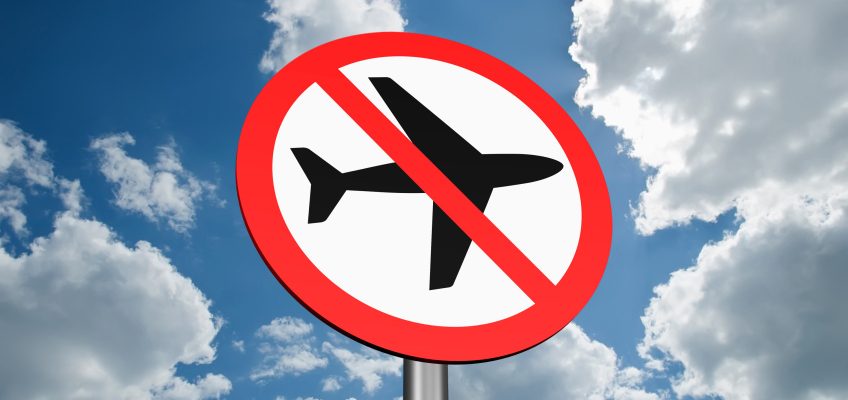The Australian Department of Foreign Affairs and Trade (DFAT) provides travel advices for more than 170 countries on their smartraveller website.
Did you know that the level of the smartraveller advice may affect the cover provided by your travel insurance policy?
The smartraveller website is a great resource for travellers. The travel advisories identify risks you might encounter at your destination and provide useful information about local laws and travel, health, safety, natural disasters and entry/exit requirements. The advisories also provide contact information for emergency services and the local embassy.
These travel advisories are updated from time to time, usually if something happens which affects Australians travelling in the area. Although the advisories aren’t updated for every incident that occurs, it is a good idea to sign up to receive updates by email. This will help keep you informed in addition to information you can obtain locally via the media etc.
What are the levels?
There are four smartraveller advisory levels:
Level 1 – Exercise normal safety precautions
Level 2 – Exercise a high degree of caution
Level 3 – Reconsider your need to travel
Level 4 – Do not travel
The level selected by DFAT for a destination is based on its assessment of risks posed to Australians travelling to and in the destination country.
Level 1 generally means that overall, DFAT assesses the destination as similar to being located in a large Australian city. This usually means the destination has a functioning law and order system and stable government. DFAT recommends travellers exercise common sense, be alert to suspicious behavior and monitor local media etc. Essentially, just like you would do if you were in a large Australian city.
Level 2 is higher than Level 1 and means the risk to travellers is greater than what you would encounter in a large Australian city. This may be due to deficiencies in public services (eg law enforcement), a high level of violent crime or security threats such as civil unrest or terrorism potential. It could also be due to a short term issue such as a passing cyclone, natural disaster or local election.
Level 2 smartraveller warnings usually recommend you research specific threats and take extra precautions for your personal safety while at the destination.
Level 3 means there are serious threats and potentially life threatening risks at the destination which make it unsafe for tourist and non-essential travel. Reasons for a Level 3 advisory could include terrorism and kidnapping threat, violent crime, ongoing civil rest or disease.
When an advisory is at Level 3, the Australian government is recommending you reconsider your need to travel to the destination. You should consider whether you need to go – perhaps you can defer your travel or choose another destination. If you are at the destination and the warning level is lifted to “Reconsider your need to travel”, it’s a good idea to see if you can leave.
Level 4 is the highest warning level and in this case, the Australian government is advising travellers not to travel to the destination. This means the destination is extremely dangerous. According to DFAT, reasons for this warning level include ”a high threat of terrorist attack, ongoing armed conflict, violent social unrest or critical levels of violent crime”. It could also be that more than one of these factors is at play. If you are in a country and the warning level is lifted to “Do not travel”, consider leaving immediately if safe to do so.
Bear in mind too that sometimes the advisory for a country overall may be Level 1 or 2 but specific areas or regions within the country may be at Level 3 or 4.
What about travel insurance?
Most travel insurance policies carry an exclusion that says the insurer wont be liable for any claim that arises from you exposing yourself to needless danger. More specifically though, many policies have an exclusion that says the insurer wont pay any claim which results from you travelling to an area or country that the Australian Government recommends you don’t visit. Some policies specifically state that no claim will be payable if you travel to a country where the smartraveller warning level is Level 4 – Do not travel. Others are more general in that they don’t specify the warning level but just reference travelling to countries where the Australian government recommends against travel. In this case, the policy may not respond if you travel to a country where the smartraveller advisory level is Level 3 – Reconsider your need to travel or Level 4 – Do not travel.
If you are looking to cancel a pre-booked trip because the travel advisory level has been raised, this will usually need to have occurred after the trip and policy were purchased and remain in force within a set period prior to your planned travel to the destination. If you purchase a policy to cover you for travel to a destination and the advisory at that time is Level 3 – Reconsider your need to travel and it is raised to Level 4 – Do not travel, it is unlikely the insurer will pay the claim. This is because the government was already recommending you reconsider your need to travel at the time you booked your trip and/or purchased the policy. For a claim to be payable in this circumstance, the warning level at the time of booking the trip and/or purchasing the policy would need to be Level 1 or Level 2.
Also, the warning advising against travel must remain in force at the time you were pre-booked to travel. That is, the warning must apply at the time you were planning to be at the destination. A warning level increase advising against travel many months in advance of your scheduled travel to the destination may not entitle you to make a claim. This is because the reason for the warning against travel may resolve prior to your scheduled travel date. The reason for the warning must still be valid at the time you plan to travel to the destination to entitle you to cancel the trip and make a claim against the policy.
As the Australian government slogan says – “be a smart traveller”. Keep up to date with the advisory level for your chosen destination and check with your travel provider to make sure you understand how the government advice level may affect your travel plans and entitlement to claim.
Got questions? Why not call us on 1300 819 888 or send an email to info@goinsurance.com.au


